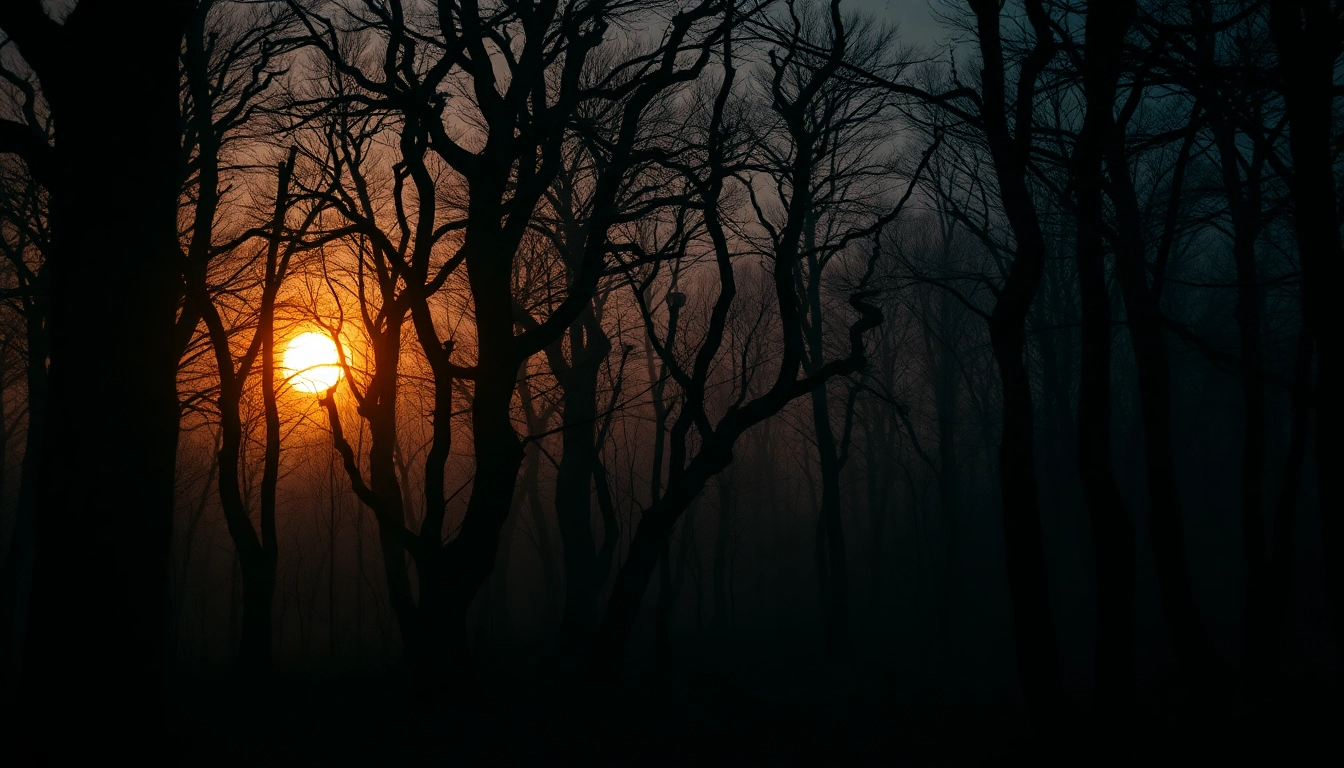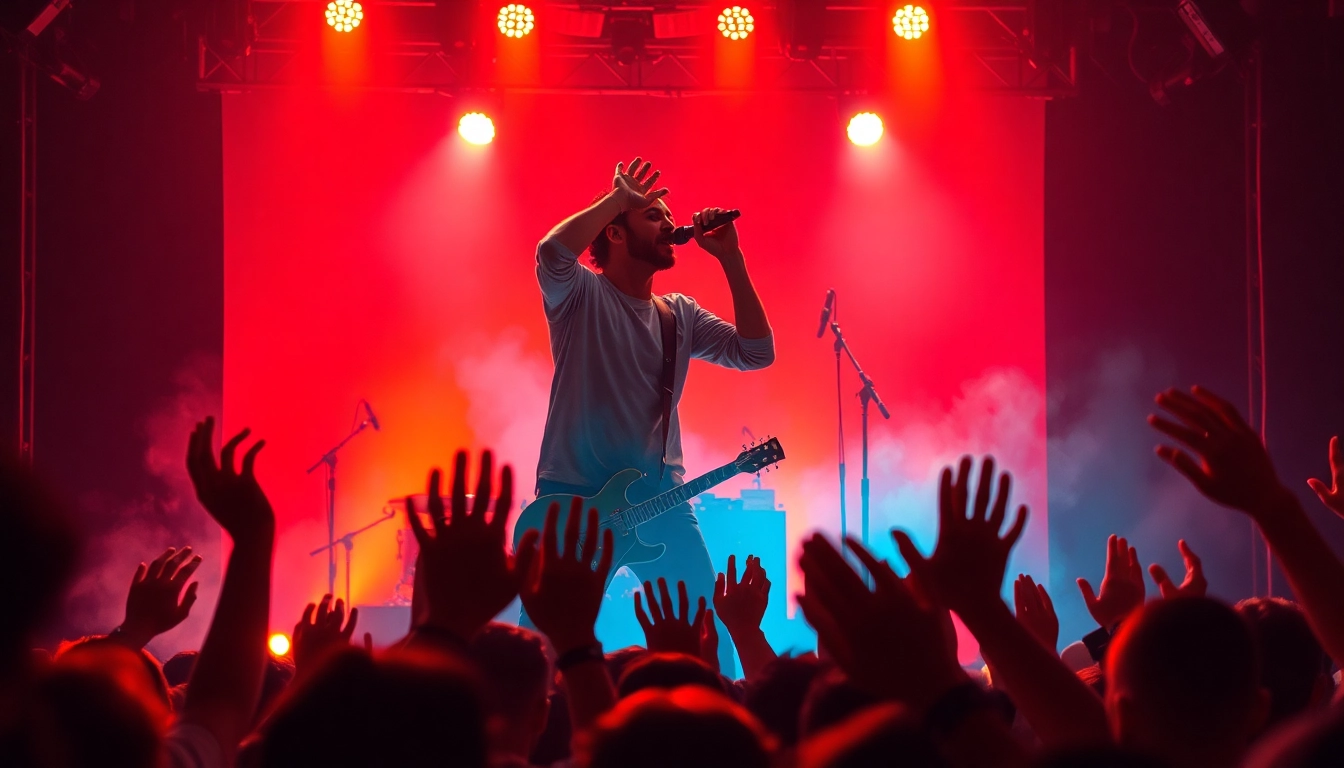Introduction to the Horror Genre
The horror genre has long captivated audiences, taking them on thrilling journeys filled with fear, suspense, and terror. As a collective reflection of societal anxieties and fears, horror movies have evolved tremendously from their early beginnings. The genre is now a tapestry woven with diverse threads of psychological tension, supernatural encounters, and visceral violence. For horror aficionados and newcomers alike, https://hellhorror.com serves as a dedicated platform offering comprehensive insights into the most thrilling and chilling cinematic experiences.
The Evolution of Horror Films
Horror films emerged in the late 19th century, with the first feature-length horror film, “The Cabinet of Dr. Caligari” (1920), igniting a spark that would lead to the genre’s growth. Throughout the decades, horror has mirrored cultural paradigms, adapting to societal changes and technological advancements. The 1930s and 1940s gave birth to iconic Universal monsters like Dracula and Frankenstein, while the 1960s-1970s pushed boundaries with films like “Psycho” and “Night of the Living Dead,” introducing themes of psychological horror and social commentary. The 1980s, meanwhile, ushered in an era of slashers and gore, epitomized by franchises such as “Halloween” and “Friday the 13th.”
Entering the new millennium, horror found fresh avenues through digital filmmaking and the rise of the internet. Found footage films like “The Blair Witch Project” and psychological thrillers such as “Get Out” have redefined audience expectations, shifting from gratuitous violence to deep emotional engagement and social relevance. These evolutionary stages highlight the genre’s flexibility, showcasing its capacity to adapt and flourish over time.
Sub-genres of Horror Explained
The wide world of horror is not monolithic; it is characterized by various sub-genres, each delivering unique experiences. Some of the most notable sub-genres include:
- Psychological Horror: Focuses on mental and emotional fear, examining the human psyche. Films like “Black Swan” and “The Shining” exemplify this approach, emphasizing internal struggles over external threats.
- Supernatural Horror: Involves otherworldly entities and phenomena. Classic films like “The Exorcist” and contemporary hits like “The Conjuring” delve into supernatural themes, tapping into primal fears of the unknown.
- Slasher Films: Feature a murderous antagonist stalking victims. Franchises like “A Nightmare on Elm Street” and “Scream” have popularized this format, known for its gore and tension.
- Body Horror: Examines the human body as a site of fear through grotesque transformations. David Cronenberg’s works, like “The Fly,” epitomize this sub-genre.
- Found Footage: Utilizes a documentary-style approach to add realism. “Paranormal Activity” is a prime example, drawing viewers into its immersive scares.
Popularity Trends in Modern Horror
In recent years, the horror genre has seen remarkable box office success and cultural relevance. The popularity of psychological thrillers and social horror reflects an audience eager for narratives that resonate with contemporary issues. The success of films like “Get Out” and “Hereditary” not only garnered critical acclaim but also sparked discussions about race, mental health, and family dynamics. Streaming services have also played a crucial role in bringing horror content directly to viewers, with platforms like Netflix dedicating entire sections to horror films, making previously hard-to-find titles more accessible.
Top Horror Movies of 2025
The year 2025 is set to showcase a plethora of horror films that promise to send chills down the spine of audiences. With filmmakers experimenting with innovative storytelling techniques and rising stars in the genre, this year’s slate is one to watch.
Highly Anticipated Films
Some of the most eagerly awaited horror films for 2025 include:
- Ash: A unique blend of supernatural horror and psychological drama that examines themes of grief and loss.
- Popeye the Slayer Man: A thrilling reinterpretation of the classic character, showcasing horror elements rarely seen in the original format.
- Death of a Unicorn: A dark fantasy horror that pushes the boundaries of traditional storytelling by merging fairy tale elements with visceral terror.
Breaking New Talent in Horror
With each passing year, new voices emerge in the horror landscape. Fresh talent brings innovative ideas and perspectives, enriching the genre. Filmmakers such as Ari Aster and Jordan Peele have established themselves with unique storytelling techniques that challenge conventions and engage audiences on intellectual and emotional levels. Expect to see a wave of new directors who will reshape perceptions of horror in 2025, with original stories that reflect societal struggles and fears.
Critical Acclaim: What Critics are Saying
Critics often provide insight into the effectiveness of horror films by analyzing their themes, performances, and cinematography. Many films receiving critical acclaim in 2025 have focused on blending traditional horror with pressing social issues—an approach that not only entertains but also encourages conversation. Review aggregators and film critics are increasingly recognizing films that offer more than mere jump scares, leading to a renaissance of intelligent horror.
What Makes a Great Horror Movie?
The elements that define a great horror film extend beyond simply terrifying aesthetics. A successful horror movie intricately weaves together storytelling, visuals, sound design, and audience engagement.
Essentials of Storytelling in Horror
The core of any powerful horror film lies in its narrative. A well-crafted story should involve relatable characters that grapple with fear and adversity. Mastering pacing is crucial; building suspense through gradual revelations often enhances audience engagement. Films that balance character development with authentic horror, such as “The Babadook,” elevate impact and resonance with viewers.
Visual Elements That Scare
Visual storytelling plays a pivotal role in horror, as imagery can evoke powerful emotions and fears. Utilizing lighting, camera angles, and special effects—all tailored to evoke chills—is vital. Directors often employ techniques such as shadows, sudden cuts, and close-ups to create discomfort and unease. Movies like “It Follows” effectively utilize cinematography to amplify tension, showcasing how technical elements contribute to the overall horror experience.
The Role of Sound and Music
Sound design is another fundamental layer in horror filmmaking. An unsettling score, strategically placed sound effects, and silence can all evoke terror. The auditory experience heightens emotional responses, drawing audiences deeper into the narrative. For example, the iconic music of “Jaws” has become associated with impending doom, showcasing how sound not only complements visuals but shapes an audience’s emotional landscape.
The Impact of Streaming Services on Horror
In recent years, streaming platforms have dramatically shifted the landscape of film consumption, including horror. The accessibility and variety offered on these services have resulted in a more robust engagement with the genre.
Netflix vs. Traditional Releases
Streaming giants like Netflix and Hulu have revolutionized how horror films are distributed and consumed. Unlike traditional theatrical releases that often rely on elaborate marketing campaigns, streaming services provide instant access to a vast library of content, inviting audiences to explore hidden gems and lesser-known titles. This democratic approach is reshaping the horror audience, allowing unique independent films to garner recognition alongside mainstream blockbusters.
Accessibility and Audience Reach
Streaming services have broken barriers, enabling audiences worldwide to access a diverse array of horror films. From classic horrors to contemporary indie projects, horror movies are now just a click away. The distribution method also allows for the exploration of sub-genres that might have otherwise gone unnoticed in cinemas, creating a more enriching experience for fans and sparking discussions across social media platforms.
Curating Sites like https://hellhorror.com
Websites like https://hellhorror.com play a vital role in curating content for horror enthusiasts. By providing reviews, rankings, and updates on upcoming releases, these platforms maintain a fervent dialogue within the horror community, ensuring that audiences can easily access recommendations tailored to their tastes. Such resources allow fans to discover new films while fostering a sense of connection among horror aficionados.
Conclusion: The Future of Horror Films
As we look ahead, the future of horror films remains vibrant and diverse, shaped by innovations in storytelling, technology, and audience engagement. The genre continues to grapple with and reflect societal issues, ensuring its relevance in the years to come.
Predictions for Upcoming Trends
Anticipated trends suggest that the fusion of horror with other genres will continue to thrive. Audiences are drawn to hybrids like horror-comedy and horror-fantasy, which offer new experiences without sacrificing the emotional punch that horror provides. Additionally, with advances in technology, augmented reality (AR) and virtual reality (VR) could play significant roles in engaging viewers in immersive horror experiences.
Final Thoughts on the 2025 Horror Slate
The horror slate of 2025 is poised to deliver an assortment of films that push the boundaries of creativity and fear. With fresh voices and a variety of thematic explorations, audiences can look forward to gripping narratives that will challenge their perceptions. As the horror genre continues to evolve, it remains an exciting landscape filled with limitless potential.
Engaging with the Horror Community
Whether through fan conventions, film festivals, or online platforms, engaging with fellow horror enthusiasts enriches the experience of the genre. As fans share recommendations, theories, and critiques, it fosters a vibrant community where everyone can contribute to the narrative of horror. Remember, the fear we share speaks to the very humanity we embrace.



